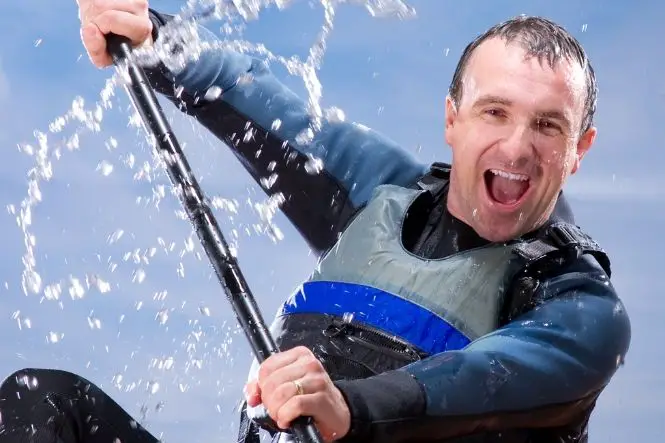Watersports either at competition level or as part of a holiday, such as canoeing, rowing and water skiing are popular with able bodied and disabled participants alike.
The first thing to consider before you even go into the water is what clothing you need to keep yourself as dry and warm as possible. Some disabled people have said that the first thing instructors have said to them is that it will be OK, because no one is going to get wet, before putting a group of disabled people in boats,wearing the clothes off the street. Ideally you will need a wet suit when in the boat,with many such suits being able to be modified with, for example, zips at the wrists and ankles.
Other options are to wear a bolero jacket warmer,a cag or a beavertail style suit. Another item to consider is footwear such as boots,as these may make it easier to walk or stand than would otherwise be the case if you were just walking in bear feet or water saturated trainers. Buoyancy aids fitted with crotch straps,to prevent the jacket riding up and gloves that help people grip a blade or a handle are also worth considering.
Rowing Boats
Adaptive boats are available for disabled rowers and these have high backed seats fixed in position in the boat. These seats support both the upper and lower back of the rower, who is strapped in their seat to prevent movement of their trunk.
These seats are also available for fitting in other, non-rowing,boats and also indoor rowing machines. It is also possible to use buoyancy devices, such as pontoons, attached to boats which provide additional lateral balance. Some disabled rowers find rowing backwards difficult, due to the constant need to look over their shoulder as to where they are heading, and for them there is a forward rowing system available that enables rowers to face the direction of travel. The hull of an adaptive rowing boat is identical to that of a boat used by able bodied rowers.
Water Skiing
Water skiing can be great fun, but it takes some getting used to, so you don’t end up overtaking your skis and nosediving into the water.
It is important not to try and get in the upright skiing position by using your own muscles. It is important to let the power boat get you upright, which allows your own muscles to be used for the important task of maintaining your body position. It is best to keep your knees bent, but maintaining their strength, and arms braced. This is to allow your limbs to remain flexible, something that locked legs and arms do not offer.
As you are hauled by the power boat allow the planing motion of the skis to lift you out of the water. Attempting to stand up is something that can be addressed later. Initially it is important to concentrate on keeping your legs bent and strong. When water skiing hold the handle tight, but do not pull on it. Keep your arms strong and your shoulders back. Locked elbows make it easy for the handle to slip from your grasp and go flying towards whoever is in the power boat.

